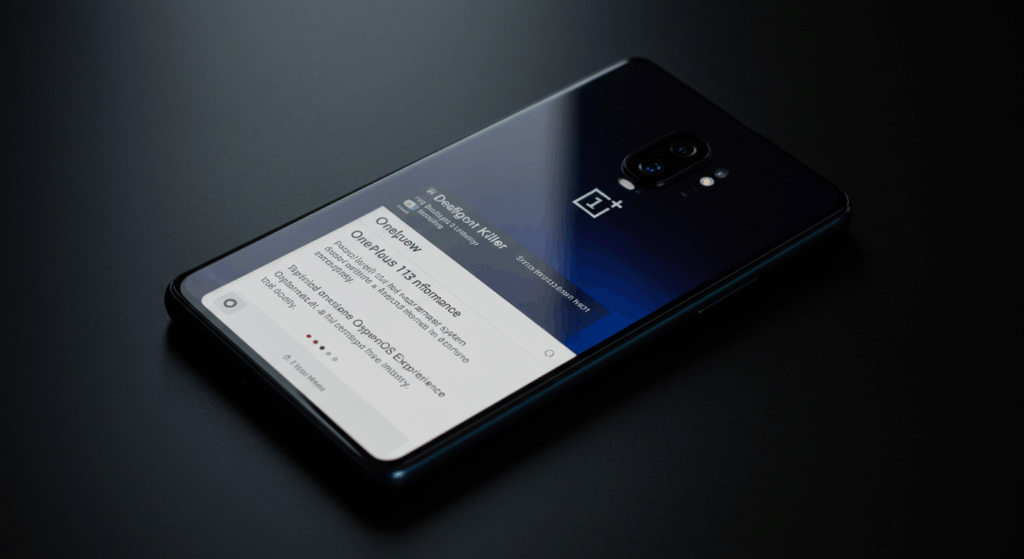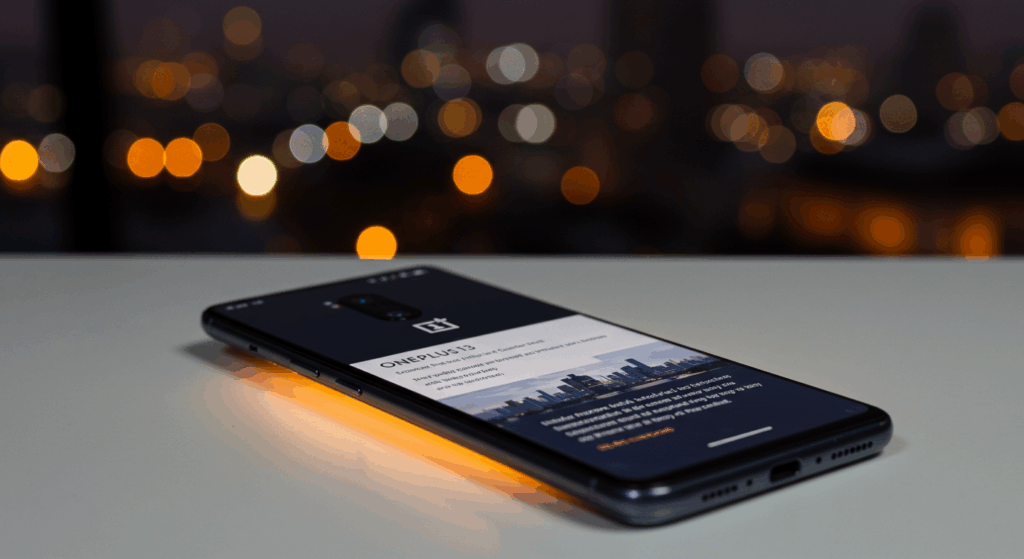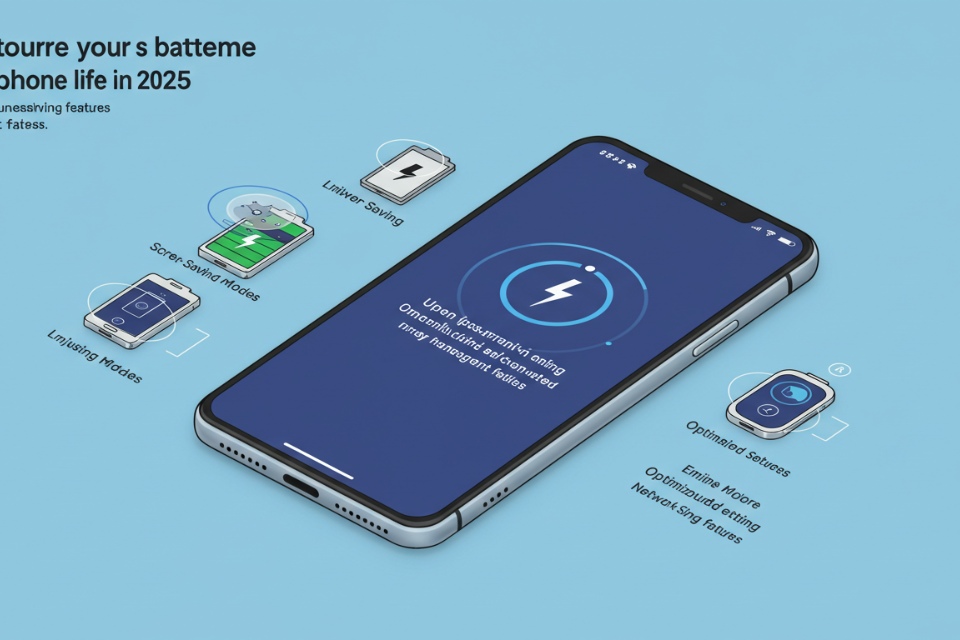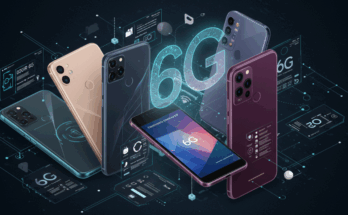The OnePlus 13 has arrived, and it’s making waves in the smartphone world with its bold claim of being a “flagship killer” in 2025. With a starting price of $899, it undercuts many competitors while promising top-tier performance, a stunning display, and a refined design. But does it live up to the hype? In this in-depth review, we’ll explore the OnePlus 13’s specifications, features, and real-world performance, drawing from recent reviews and hands-on insights to give you a comprehensive look at what this phone offers.
Design and Build: Premium Yet Practical
The OnePlus 13 strikes a balance between elegance and functionality, refining the design language of its predecessors. Measuring 162.8 x 76.5 x 8.5mm and weighing 210g or 213g (depending on the back material), it’s a large but surprisingly manageable device. The phone features a flat aluminum frame with slightly curved glass on the front and back, giving it a premium feel without being overly slippery. OnePlus offers three color options: Arctic Dawn (white frosted glass), Black Eclipse (faux rosewood grain), and Midnight Ocean (blue microfiber vegan leather). The Midnight Ocean variant, in particular, stands out for its unique texture and grip, though some may find the vegan leather an acquired taste.
A standout feature is the IP68/IP69 rating, a first for OnePlus. This makes the phone resistant to water submersion and high-pressure water jets, offering peace of mind for users in wet or dusty environments. OnePlus even demonstrated the phone surviving a dishwasher cycle, showcasing its durability. The iconic Alert Slider remains, allowing quick toggling between silent, vibrate, and ring modes—a feature increasingly rare among Android flagships.
The phone’s 6.82-inch display is protected by Ceramic Guard glass (or Gorilla Glass in some regions), with a pre-applied screen protector for added security. The design is slightly larger than the OnePlus 12 but feels more compact due to its ergonomic curves and balanced weight distribution. However, one-handed use can be challenging, especially for reaching the volume buttons.
Display: A Visual Powerhouse
The OnePlus 13 boasts a 6.82-inch LTPO AMOLED display with a 1440 x 3168 resolution (510 PPI) and a dynamic 1-120Hz refresh rate. Dubbed the “Oriental Screen” (BOE X2 panel), it achieves a peak brightness of 4,500 nits and an average of 1,600 nits, making it one of the brightest displays on the market. In real-world testing, it delivers excellent outdoor visibility, though it falls slightly short of competitors like the Pixel 9 Pro XL in maximum brightness under specific conditions.
The display supports HDR10+, Dolby Vision, and Ultra HDR, ensuring vibrant colors and deep blacks for streaming content on platforms like Netflix and YouTube. OnePlus introduces RadiantView technology, which dynamically adjusts brightness and contrast for specific screen areas to enhance visibility. The 2160Hz PWM dimming minimizes flicker, reducing eye strain during prolonged use, and the LTPO 4.1 panel optimizes power efficiency by adjusting refresh rates based on content.
Customization options abound, with Natural, Pro, and Vivid color modes, plus an Adaptive Tone feature that adjusts color temperature to match ambient lighting, similar to Apple’s True Tone. The display has earned a DisplayMate A++ rating, praised for its color accuracy and smoothness, making it ideal for gaming, video watching, and everyday use. Unique features like Aqua Touch 2.0 ensure responsive touch in wet conditions, and Gloves Mode allows operation with gloves—a thoughtful addition for users in colder climates.
Performance: Snapdragon 8 Elite Shines
At the heart of the OnePlus 13 is the Qualcomm Snapdragon 8 Elite chipset, featuring a 3nm architecture with an octa-core CPU (up to 4.32GHz) and Adreno 830 GPU. This is paired with 12GB or 16GB of LPDDR5X RAM and 256GB or 512GB of UFS 4.0 storage. The result is blistering performance that outpaces many competitors, including the iPhone 16 Pro’s A18 Pro in multi-core benchmarks. In tests, the OnePlus 13 scored 6,722 points in 3DMark Wildlife Extreme, a 62.2% lead over the iPhone, and maintained steady 60fps in graphically intensive games like Wuthering Waves with a peak temperature of 105.8°F.
The phone’s 9,925 sq.mm vapor chamber cooling system ensures minimal throttling under prolonged loads, achieving a 60% stability rating in CPU stress tests. This makes it a top choice for gamers and power users. The OnePlus 13’s multitasking capabilities are enhanced by OxygenOS 15’s Open Canvas, which allows seamless app switching and split-screen functionality. With up to 10 apps accessible with just two swipes, it’s one of the most efficient multitasking UIs available.
Camera: Hasselblad-Powered Excellence
OnePlus continues its partnership with Hasselblad, delivering a triple-camera system with three 50MP sensors:
- Main Camera: Sony LYT-808 (1/1.4″, f/1.6, OIS, 23mm focal length) for sharp, detailed shots.
- Ultrawide Camera: Samsung ISOCELL JN5 (1/2.76″, f/2.0, 120° FoV) for wide-angle photography.
- Telephoto Camera: Sony LYT-600 (1/1.95″, f/2.6, 3x optical zoom, OIS) with a compact Triprism design.
The camera system excels in well-lit conditions, producing vibrant, natural-looking photos with improved processing over the OnePlus 12. Portrait shots benefit from Hasselblad’s color tuning, delivering lifelike skin tones. Low-light performance is strong, thanks to the wide f/1.6 aperture, though some reviews note over-processed images in standard Photo mode, with unnatural highlights and clarity.
AI features like AI Unblur, AI Reflection Eraser, and AI Detail Boost aim to enhance photos but can be hit-or-miss. For example, AI Unblur sharpens slightly out-of-focus images effectively, but AI Reflection Eraser sometimes leaves artifacts. The camera supports 4K/60fps Dolby Vision recording across all lenses, a first for OnePlus, though ultra-steady stabilization is limited to lower resolutions on secondary cameras.
Compared to rivals like the Galaxy S24 Ultra and iPhone 16 Pro, the OnePlus 13’s camera is competitive but not class-leading. It shines in versatility but may not match the consistency of Pixel or iPhone in challenging lighting conditions. For most users, however, the camera delivers excellent results for the price.

Battery and Charging: Unmatched Endurance
The OnePlus 13 houses a massive 6,000mAh battery, one of the largest in its class. Combined with the efficient Snapdragon 8 Elite and LTPO 4.1 display, it offers exceptional battery life, easily lasting a full day with heavy use and up to two days with moderate usage. Fast charging is a highlight, with 100W wired charging (0-100% in 36 minutes) and 50W wireless charging. A 10W reverse wireless and 5W reverse wired charging add versatility.
Not all markets include a charger, but using a compatible SuperVOOC adapter, the phone achieves 55% charge in 15 minutes. Even with a 65W aftermarket adapter, it reaches 86% in 30 minutes, showcasing its charging prowess. This combination of battery life and charging speed is unmatched by most competitors, making the OnePlus 13 a standout for users who prioritize endurance.
Software: OxygenOS 15 and AI Integration
Running Android 15 with OxygenOS 15, the OnePlus 13 offers a smooth, customizable experience. OxygenOS, while similar to Oppo’s ColorOS, retains OnePlus’s signature fluidity with features like Flux themes, off-screen gestures, and a split notification/control panel. The Intelligent Search tool uses AI to search across files and apps, though it’s limited to 1,000 files and 30,000 characters per file.
AI features include Google’s Circle to Search, Gemini Live, AI Notes, and OnePlus’s AI suite (AI Summary, AI Speak, AI Writer). While functional, these AI tools are not as advanced as those from Google or Samsung. The phone also supports unique features like Fluid Cloud for real-time app updates (e.g., Spotify, Zomato) and BeaconLink for Bluetooth-based communication within 650 feet, though it’s limited to OnePlus and Oppo devices.
OnePlus promises four years of Android updates and six years of security patches, which is solid but falls short of Google and Samsung’s seven-year commitment. OxygenOS 15 is lightweight and fast, with minimal bloatware, making it a favorite for users who value simplicity and speed.

Connectivity and Extras
The OnePlus 13 supports 5G, Wi-Fi 7, Bluetooth 5.4, NFC, and an IR blaster for controlling appliances. It features a dual SIM tray and eSIM support, ensuring flexible connectivity. The ultrasonic fingerprint sensor is fast and reliable, a significant upgrade over previous optical sensors. Stereo speakers with OReality Audio deliver impressive sound, with loud bass and clear highs, earning a “Very Good” loudness rating.
Value and Verdict
Starting at $899 for 12GB/256GB and $999 for 16GB/512GB, the OnePlus 13 offers unmatched value. It competes with phones like the Galaxy S25 Ultra and iPhone 16 Pro, which cost $100-$300 more, while delivering comparable performance, a superior display, and better battery life. However, its camera and software support lag slightly behind the competition, and the lack of satellite connectivity (available on Google and Apple devices) is a minor drawback.
Recent reviews praise the OnePlus 13 for its balance of price and performance. TechRadar called it “dumbfoundingly flawless,” while Android Central dubbed it the “best Android phone” for its build quality and features. However, CNET noted it lacks a standout feature to differentiate it from rivals, suggesting a $100 price cut could make it more compelling.
For OnePlus fans and Android enthusiasts, the OnePlus 13 is a no-brainer. It’s a polished, powerful device that delivers flagship performance without breaking the bank. If you prioritize cameras or longer software support, a Pixel 9 Pro or Galaxy S25 Ultra might be worth the extra cost. Otherwise, the OnePlus 13 is a true flagship killer, redefining what value means in 2025.
Sources: PCMag, PhoneArena, Tom’s Guide, Android Central, GSMArena, TechRadar, IGN, NextPit, BGR, Droid-Life, OnePlus official website



